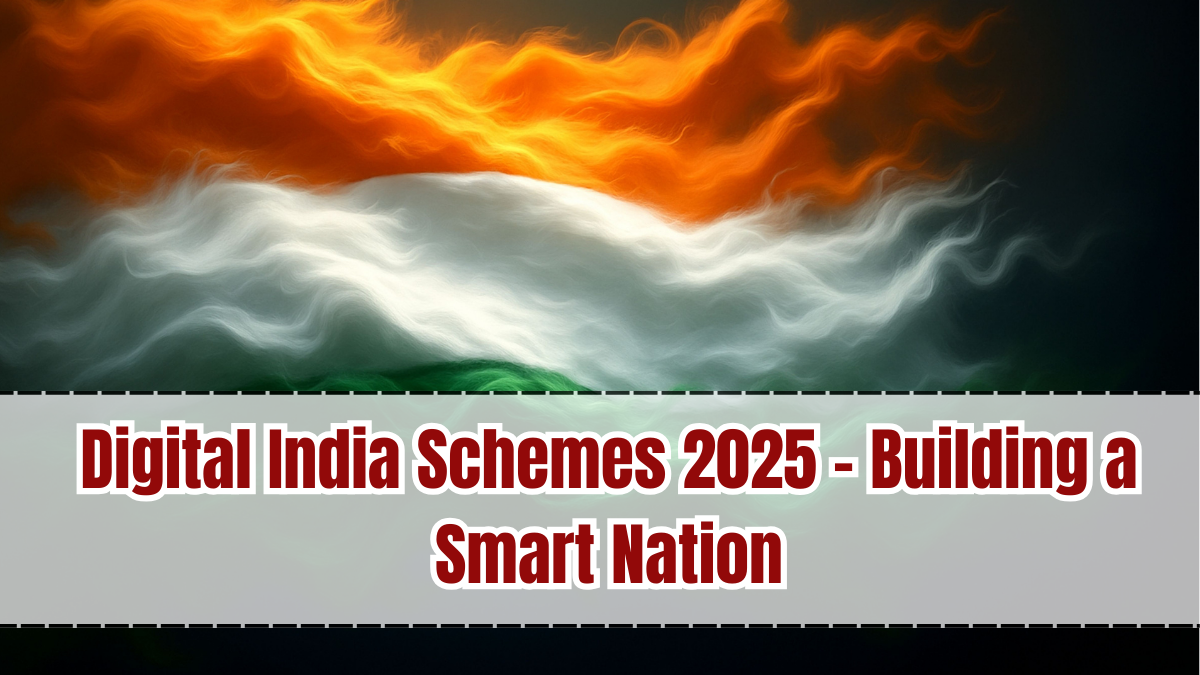India is undergoing a massive digital transformation, and Digital India Schemes 2025 are at the core of this change. Launched in 2015, the Digital India mission has aimed to bridge the digital divide, enhance governance, and improve internet connectivity across the country. In 2025, the government has expanded these efforts with new schemes that make technology accessible to every citizen—especially those in rural and underserved areas.
The focus is no longer just on internet access but also on digital literacy, e-governance, and smart services that empower individuals and strengthen the economy. With India’s increasing role in the global digital economy, these initiatives set the foundation for a connected and technologically advanced nation.

Why Digital India Schemes Matter in 2025
Technology has become the backbone of development. From online education to telemedicine and e-commerce, every sector now depends on digital infrastructure. However, millions of Indians, particularly in rural regions, still face challenges in accessing reliable internet and basic digital services.
The Digital India Schemes 2025 are designed to:
-
Expand internet access through rural broadband networks.
-
Increase digital literacy and training programs.
-
Simplify government services via e-governance platforms.
-
Support startups and entrepreneurs in the digital economy.
-
Promote cyber security and safe online practices.
These efforts aim to ensure that technology becomes inclusive, bridging the rural-urban gap.
Key Features of Digital India Schemes 2025
The government has introduced several new initiatives under the 2025 framework. Some of the most impactful features include:
-
Rural Broadband Expansion: The BharatNet project continues with an expanded target to connect over 2.5 lakh Gram Panchayats with high-speed internet.
-
Digital Literacy Campaigns: Free training programs for rural youth and women ensure that every household can use basic digital tools like smartphones, UPI, and online services.
-
E-Governance Portals: Citizens can now access services such as birth certificates, land records, tax filings, and pensions entirely online.
-
Smart Village Projects: Pilot programs across states bring IoT-based solutions in agriculture, water management, and renewable energy to rural areas.
-
Cyber Security Awareness: Campaigns are being run to educate citizens about safe internet practices, digital fraud prevention, and secure digital payments.
Benefits for Citizens
The benefits of the Digital India 2025 programs extend to multiple aspects of life:
-
Education: Digital classrooms, online courses, and skill training platforms improve learning opportunities for students across India.
-
Healthcare: Telemedicine apps allow rural patients to consult doctors remotely, saving time and cost.
-
Finance: With UPI and digital banking services, people can make secure payments and access government subsidies directly.
-
Agriculture: Farmers receive weather updates, market prices, and access to digital platforms for selling produce directly to buyers.
-
Women Empowerment: Dedicated digital literacy programs for women encourage financial independence and entrepreneurship.
Support for Startups and Businesses
The 2025 Digital India schemes also recognize the role of startups in driving innovation. Incentives are being offered to digital entrepreneurs, especially in Tier-2 and Tier-3 cities, to create apps, e-commerce platforms, and online education tools. MSMEs are given access to digital infrastructure, cloud services, and online marketing tools at subsidized rates.
With government support, even small businesses can now scale up by going digital, contributing to India’s growing e-commerce economy.
Challenges and Government’s Response
While progress is evident, challenges like uneven internet penetration, lack of awareness, and cyber fraud still exist. The government is addressing these through:
-
Establishing public Wi-Fi hotspots in rural regions.
-
Strengthening cyber laws to deal with online crimes.
-
Encouraging digital literacy at school level.
-
Partnering with private telecom companies to expand affordable 5G access.
Conclusion
The Digital India Schemes 2025 represent more than just technology—they embody the idea of an inclusive, transparent, and empowered India. By bringing internet and digital services to the last mile, the government is ensuring that every citizen, whether in a bustling city or a remote village, can benefit from the digital revolution.
These schemes not only boost individual opportunities but also strengthen India’s global competitiveness. With improved infrastructure, digital education, and e-governance, 2025 marks a decisive step towards building a smart nation where technology drives equality and progress.
FAQs
What is the main goal of Digital India Schemes 2025?
The main goal is to provide affordable internet access, promote digital literacy, and simplify governance through online services for all citizens.
How does Digital India benefit rural areas?
Rural areas benefit from broadband connectivity, digital classrooms, telemedicine services, and access to government subsidies via digital banking.
What services are available through e-governance platforms?
Citizens can access land records, pensions, tax filing, certificates, and welfare schemes online, reducing the need for physical visits.
Are there programs for women under Digital India Schemes 2025?
Yes. Special digital literacy programs and financial tools are designed for women to encourage entrepreneurship and independence.
How is the government ensuring cyber safety in 2025?
Through awareness campaigns, stricter cyber laws, and advanced security features for online transactions and digital platforms.
Click here to know more.
